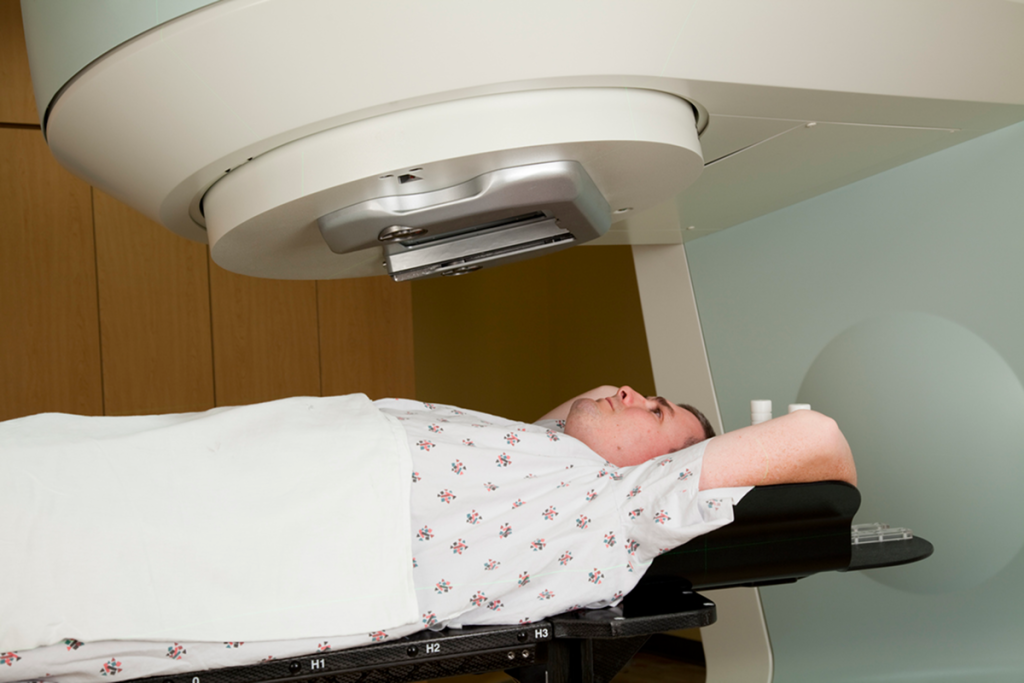Men Get Breast Cancer Too
Male breast cancer, while uncommon, is far from rare and happens usually in older men, although it can happen at any age. Although Male breast cancer accounts for less than 1% of all breast cancer cases, it is estimated that 1 in 760 men will be diagnosed with breast cancer each year.
Risk factors are those similar to women:
- Genetics (e.g., mutations in BRCA2 or other genes).
- Family history of breast cancer.
- Hormonal imbalances, including conditions that increase estrogen levels.
- Age, with most cases diagnosed in men over 60.
- Exposure to radiation, particularly in the chest area.
Symptoms: Symptoms may include:
- A lump or mass in the breast tissue.
- Changes in the appearance of the breast or nipple.
- Nipple discharge.

Breast Imaging for Men
Mammogram
Men can undergo a mammogram in a similar manner to women, although the process is more difficult due to differences in anatomy.
Chest MRI
- Staging: An MRI can help assess the extent of disease, particularly if there’s concern about possible spread to other areas in the breast or surrounding tissues.
- Treatment Planning: MRI can assist in determining the best course of treatment based on the size and location of any tumors.
- Genetic Factors: Men with BRCA mutations or a b family history of breast cancer may be recommended for more frequent surveillance, including MRI.
The decision to use an MRI will depend on individual circumstances and should be guided by a healthcare provider.
For either imaging a radiologist will interpret the images and report the results to the referring physician.

Male Breast Cancer Diagnosis:
A Diagnosis usually involves a physical exam, imaging tests and a biopsy to confirm the presence of cancer cells if there is an obvious mass, skin dimpling or nipple discharge.
Breast Cancer Treatments for men mimics that for women.
Surgery
Mastectomy for Men
Mastectomy for men involves the surgical removal of breast tissue and is typically performed when there is a diagnosis of male breast cancer or, in some cases, to prevent cancer in high-risk individuals.
Indications for Mastectomy for men:
- Diagnosed breast cancer.
- A large tumor that is not amenable to lumpectomy.
- Genetic predisposition (e.g., BRCA mutations) and a b family history of breast cancer.
Types of Mastectomy for Men
- Total (Simple) Mastectomy: Removal of all breast tissue, including the nipple and areola.
- Modified Radical Mastectomy: Involves the removal of breast tissue as well as some lymph nodes under the arm
Recovery time will vary for men with patients experiencing pain, swelling, and limited mobility in the shoulder area. Drain tubes may be placed to reduce fluid accumulation.
Some men may choose to have breast reconstruction after a mastectomy, although this is much less common compared to women.
Lumpectomy for Men
Lumpectomy for men with breast cancer involves the surgical removal of the tumor and a small margin of surrounding healthy tissue, preserving most of the breast.
Lumpectomy is typically recommended for small, localized tumors that are suitable for breast-conserving surgery. It is often considered when the cancer is hormone receptor-positive and the tumor size allows for effective removal while maintaining breast shape.
This surgery is usually performed under local anesthesia. The surgeon removes the tumor along with a margin of healthy tissue to ensure that no cancer cells remain.
Men often recover from a mastectomy faster than women due to several factors:
- Less Breast Tissue: Men typically have less breast tissue, which can result in a less extensive surgery and quicker recovery.
- Fewer Complications: Men are less likely to experience complications such as infections or lymphedema (swelling due to lymph node removal).
- Reconstruction Differences: Men who undergo reconstruction often have simpler procedures compared to women, leading to a faster recovery.
Radiation therapy
Following a mastectomy or lumpectomy, most male patients also receive a recommendation to undergo radiation therapy to reduce the risk of recurrence, because male breast cancer is often of a more aggressive nature than IDC, the most common type of female breast cancer.

Chemotherapy
Chemotherapy for male breast cancer is similar to chemotherapy for female breast cancer, although it is used less frequently due to men’s strong preference for less aggressive treatments.

Hormonal therapy
Men diagnosed with breast cancer may receive hormone therapy just like women, particularly if their cancer is hormone receptor-positive (estrogen receptor-positive or progesterone receptor-positive). Common types of hormone therapy for men include:
Aromatase Inhibitors: Medications like anastrozole (Arimidex) and letrozole (Femara) decrease estrogen production in the body, which can help slow the growth of hormone-sensitive tumors.
Tamoxifen: This selective estrogen receptor modulator (SERM) is sometimes used in men to block estrogen’s effects on breast tissue.
Estrogen Receptor Antagonists: Medications that block estrogen from binding to its receptor, although this is less common in men compared to women.

Male Breast Cancer Survival Rates
The prognosis for male breast cancer varies based on the stage at diagnosis, similar to female breast cancer. However, survival rates tend to be comparable for both genders at the same stage, despite men often opting for less aggressive treatments.
Men generally prefer less aggressive treatments, so treatment approaches for male breast cancer are tailored to the individual, focusing on options that align with each patient’s specific preferences – unlike in breast cancer treatment for women.

Emotional Support is critical to your healing. Even if everything goes smoothly with your treatment a cancer diagnosis is stressful. Reach out to your support network to help you emotionally on a regular basis. And then there is Duality to fill in the gaps!

References
- Mayo Clinic, Provides an overview of male breast cancer
- American Cancer Society, Discusses how breast cancer develops in men and available treatment strategies.

